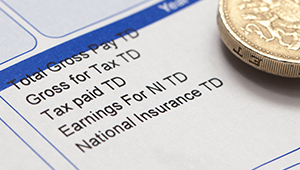16 May 2008
Have public sector workers suffered unduly from changes to the normal pension age? Probably not, in relative terms, since private sector employer provision of defined benefit schemes has gone into free fall
The recent strikes over public sector pay have once again thrown the spotlight on public sector pensions, with some claiming that they are too generous. But they have just been reformed, after more than five years of intensive negotiations between the government and the public sector unions. So are public sector pensions now more in line with those in the private sector?
The main public sector pension schemes have all increased their normal pension age from 60 to 65 for new entrants, in line with most private sector schemes. Only the armed forces, police and fire schemes have kept theirs below 65, reflecting the physical demands of these jobs.
Nurses, teachers and local government employees are now paying more on average towards their pensions than before the reforms, although the introduction of tiered contribution rates in the NHS and local government means that the lowest paid are paying less than before the reforms.
Despite this somewhat gloomy news for public sector workers, the reforms bring them valuable improvements. About half of the cost savings from the higher normal pension age have been recycled into benefit improvements, including higher rates of pension accrual.
New flexible retirement options will mean some older individuals can combine taking pensions with continuing work in less demanding roles. And the maximum tax-free lump sum available has been increased to the new Revenue and Customs limit.
Although these changes will generally reduce the generosity of pensions in the public sector overall, pensions have also been changing in the private sector. The Pensions Policy Institute is conducting new research, funded by the Nuffield Foundation, into how pensions now compare across the sectors. A few things are already clear.
Although the increases in normal pension age in the main public sector schemes apply only to new entrants, and not to existing staff, as ministers originally proposed, the government claims that it has made the savings it intended. Other parts of the packages have simply been scaled back to compensate.
The government expects to save the taxpayer about £13bn on the NHS, teachers' and civil service schemes, spread over a 50-year period. This compares with the £650bn it estimates as the total liability of all the unfunded schemes. Although this sum includes the armed forces, police and fire schemes, and will partly be met by pension contributions from public sector workers, it does put the £13bn of savings in perspective.
Of course, the cost of any pension scheme is uncertain. The new cost-sharing agreements will mean that, if life expectancy continues to rise more quickly than expected, the resulting cost might fall partly on public sector scheme members. This is good news for taxpayers, who in the past have shouldered these costs.
Despite the reforms in public sector pensions, the differences between them and private sector schemes might have grown rather than diminished over the past few years. This is because private sector pensions, and particularly the relatively generous defined benefit employer pensions, have been declining rapidly. This result is that the public sector now includes the majority of members of defined benefit pension schemes, although it makes up only about 20% of the UK workforce.
This visible difference means that private sector organisations are likely to continue to perceive public sector pensions as unfair. In effect, private sector taxpayers are being asked to finance pensions for public sector workers that are often more generous than their own.
One solution might be to boost private sector provision rather than cut public sector provision. The Pensions Bill currently going through Parliament will auto-enrol most employees into pension saving. Although individuals will be able to opt out, the government hopes that inertia will mean many who are auto-enrolled will continue saving.
This should mean more private sector employees will save in employer pension schemes, but contribution levels are still likely to remain well below public sector averages.
The recent public sector strikes have shown that remuneration must be looked at in the round, taking into account levels of pay, pensions and wider employment conditions. Recruiting and retaining high-quality staff is important to deliver better public services that can be enjoyed by all.
The PPI research will compare pensions and pay between the private and public sectors.
But while the reforms to public sector pensions will boost their long-term affordability, a gap will still remain between public sector and private sector pensions. Calls for further reform are likely to persist.
Adam Steventon is a senior policy analyst at the Pensions Policy Institute
PFmay2008


















